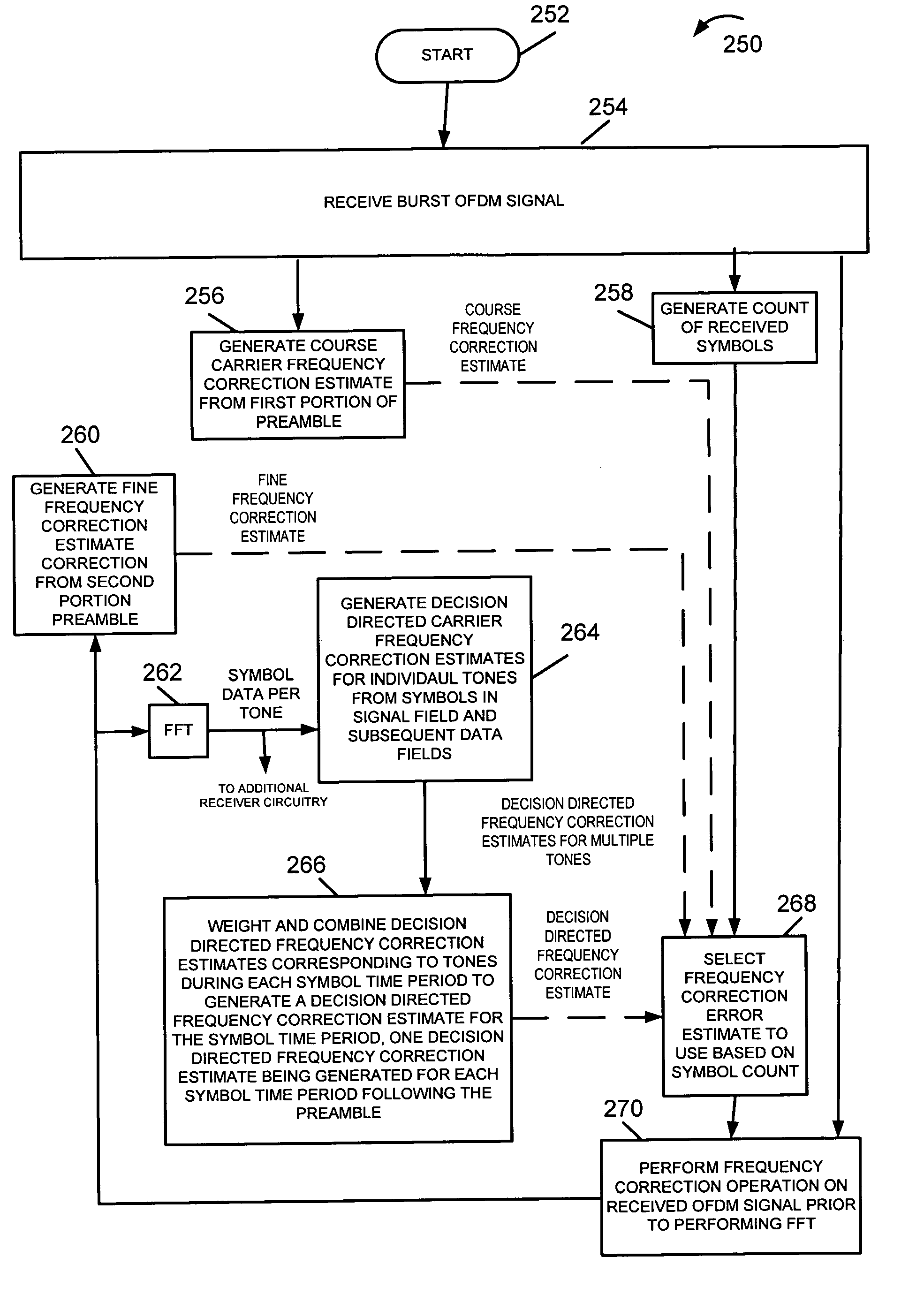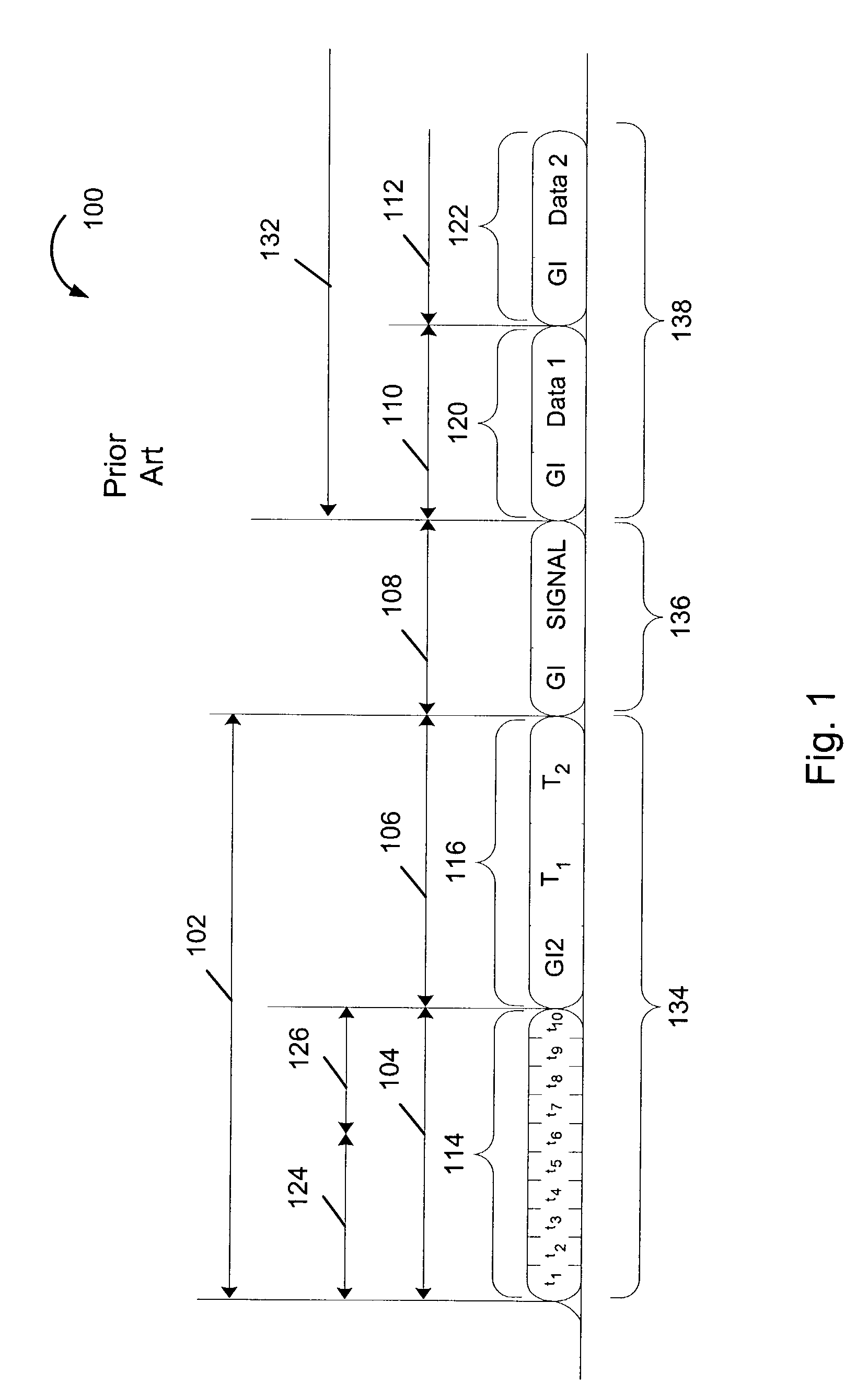Robust OFDM carrier recovery methods and apparatus
a carrier recovery and robust technology, applied in the field of communication systems, can solve the problems of low signal-to-noise ratio, loss of signal reception, recovery problems, etc., and achieve the effect of convenient and inexpensive manner
- Summary
- Abstract
- Description
- Claims
- Application Information
AI Technical Summary
Benefits of technology
Problems solved by technology
Method used
Image
Examples
Embodiment Construction
[0034]FIG. 2 illustrates a two dimensional plot of the frequency / time format of an 802.11a signal. The 802.11a signal is based on a 64-point FFT. This corresponds to the use of 64 tones, e.g., frequencies, in parallel. In general, other embodiments of the invention can be based on an N-point FFT, where N is any number. The vertical axis in FIG. 2 corresponds to frequency with 52 of the 64 different frequency bins being shown. Each bin represents a set of data corresponding to one of 64 tones included in the OFDM signal. Twelve carriers out of the sixty-four total carriers are used as null bins and are therefore omitted from FIG. 2. Thus, FIG. 2 illustrates the 52 bins 212 which are used to transmit information. The use of less than all 64 tones is done to ease filtering requirements when the signal is converted into the time domain via a digital to analog converter.
[0035]Moving along the horizontal time axis, the illustrated burst OFDM signal includes a preamble 234 that includes tw...
PUM
 Login to View More
Login to View More Abstract
Description
Claims
Application Information
 Login to View More
Login to View More - R&D
- Intellectual Property
- Life Sciences
- Materials
- Tech Scout
- Unparalleled Data Quality
- Higher Quality Content
- 60% Fewer Hallucinations
Browse by: Latest US Patents, China's latest patents, Technical Efficacy Thesaurus, Application Domain, Technology Topic, Popular Technical Reports.
© 2025 PatSnap. All rights reserved.Legal|Privacy policy|Modern Slavery Act Transparency Statement|Sitemap|About US| Contact US: help@patsnap.com



